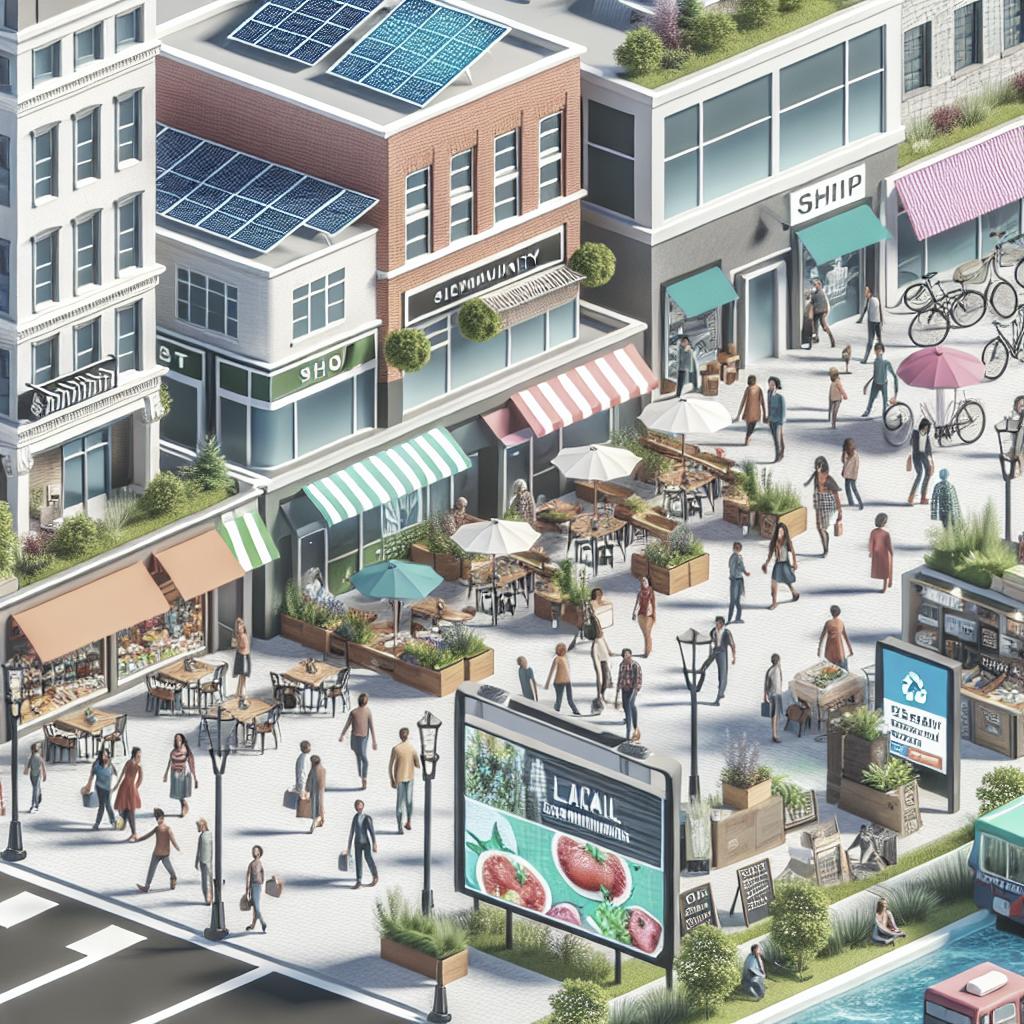<>
“`
Urban environments are the lifeblood of local businesses, providing the community and infrastructure needed for them to thrive. This blog post explores a multifaceted approach to creating urban environments that nurture local businesses. From community engagement to sustainable infrastructure and from modern technology to economic incentives, each strategy plays a crucial role in this ecosystem. We’ll delve into actionable strategies under subtle topics that could significantly impact the growth and sustainability of local businesses in urban settings.
Community Engagement and Participation
For local businesses to succeed, they need to be an integrated part of their community. Encouraging community engagement offers a twofold benefit: it provides consumers for local businesses and fosters a sense of ownership and pride among residents. This can be achieved through community events, local fairs, and business-led initiatives that promote a sense of unity.
Participating in local decision-making processes enables businesses to advocate for changes that directly benefit them. Urban planners can facilitate this by creating forums for dialogue between business owners and community members. Collaboration with local schools, charities, and other organizations can also provide networking opportunities and further integrate businesses into the community fabric.
Strategic Location and Zoning
Zoning laws and urban planning decisions significantly impact the success of local businesses. For example, mixed-use developments where residential areas are combined with commercial spaces can ensure a constant flow of customers. Strategic location choices elaborated through zoning that promotes accessibility can make a significant difference in business visibility and foot traffic.
Collaborating with urban developers to design spaces that are business-friendly can go a long way. Implementing pedestrian-friendly walkways, accessible public transportation options, and ample parking can further enhance the attractiveness of these areas. Zoning laws that support pop-up shops and farmers’ markets can also provide seasonal bursts of activity and revenue for local vendors.
Modern Infrastructure and Amenities
Investing in modern infrastructure can greatly benefit local businesses. High-speed internet, efficient public transportation, and well-maintained roads attract both businesses and customers. Additionally, incorporating green spaces, public seating, and well-lit streets can make areas more welcoming.
Businesses thrive when the environment encourages people to spend time outdoors. Therefore, urban planners need to consider the lifestyle and needs of modern consumers. Providing adequate waste management systems and clean, safe environments also contributes to the overall desirability of the location.
Support for Small Businesses and Startups
Support structures for small businesses and startups include incubators, co-working spaces, and mentorship programs. These resources can provide the essential tools and knowledge that new businesses need to succeed. By creating business-friendly policies and offering grants or low-interest loans, cities can ensure that small businesses have the financial support they need to grow.
Networking opportunities and collaborations can also be facilitated through local business associations and chambers of commerce. Such organizations can provide a platform for sharing best practices and addressing common challenges. By offering workshops and training sessions, these entities can help small businesses keep up with the latest market trends and innovations.
Embracing Technology
Technology can serve as a powerful enabler for local businesses. Creating digital platforms that promote local businesses, offering e-commerce solutions, and providing digital marketing training can help businesses reach a broader audience. Smart city initiatives that use data analytics to manage resources and optimize city services can also benefit local businesses.
Moreover, integrating technology into public transportation systems and infrastructure can streamline operations for businesses. For example, real-time traffic updates and smart parking solutions can improve customer access and experience. By encouraging businesses to use technology, urban environments can enhance their efficiency and competitiveness.
Economic Incentives and Tax Benefits
Economic incentives and tax benefits can provide crucial support for local businesses. These can include tax breaks, subsidies, and grants aimed at promoting local entrepreneurship and helping businesses get off the ground. Offering incentives for sustainable practices and local sourcing can also contribute to the overall economic health of the area.
Additionally, urban planners can work on creating special economic zones that offer reduced taxes and other benefits to attract diverse businesses. Such initiatives can lead to a more vibrant local economy and provide job opportunities for residents. It’s essential to ensure that these incentives are accessible and well-publicized to encourage participation.
Promoting Cultural Activities
Cultural activities and events can serve as significant attractions for local businesses. Hosting festivals, art shows, and farmer markets can draw crowds and boost business for local vendors. These events also offer opportunities for local businesses to showcase their products and services to a wider audience.
Creating spaces such as art galleries, public parks, and performance venues can serve as hubs for cultural activities and foster a creative environment. Collaborating with local artists and performers can further enrich the community’s cultural landscape. This not only enhances the local quality of life but also drives economic growth by attracting tourists and visitors.
Future Prospects
| Strategies | Benefits |
|---|---|
| Community Engagement and Participation | Promotes customer loyalty, enables advocacy for beneficial changes, fosters pride. |
| Strategic Location and Zoning | Ensures constant flow of customers, enhances visibility, supports seasonal bursts in revenue. |
| Modern Infrastructure and Amenities | Attracts businesses and customers, encourages outdoor activities, enhances safety and cleanliness. |
| Support for Small Businesses and Startups | Provides essential tools and knowledge, offers financial support, creates networking opportunities. |
| Embracing Technology | Reaches broader audience, streamlines operations, enhances business efficiency. |
| Economic Incentives and Tax Benefits | Promotes local entrepreneurship, attracts diverse businesses, supports economic health. |
| Promoting Cultural Activities | Boosts local business, enriches cultural landscape, drives economic growth. |
“` This structure and content offer a comprehensive guide to creating urban environments that support local businesses, blending practical strategies with the specific benefits they provide. This approach ensures readability and presents clear, actionable information for various stakeholders.


